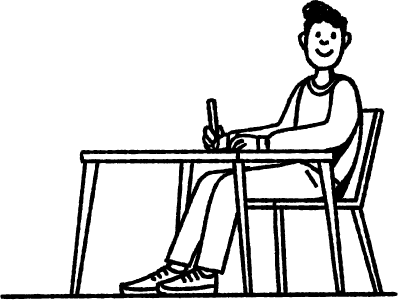Myths about teaching can hold you back
- Year 1
Formation of i, l and t
You can form the letters i, l and t.
These resources will be removed by end of Summer Term 2025.
Switch to our new teaching resources now - designed by teachers and leading subject experts, and tested in classrooms.
These resources were created for remote use during the pandemic and are not designed for classroom teaching.
Lesson details
Key learning points
- The letter i, l and t are formed by "going down and finish with a flick".
- The letters l and t are tall letters.
- The letter i has a dot at the top and the letter t has a cross.
- Letters that are formed in similar ways can be called letter families.
Keywords
Ascender - the part of a letter that extends above the level of the top of an "x"
X-height letter - letters that reach the middle height on the line
Small letters - regular-sized letters that are not as tall as the tall letters
Tall letters - letters that reach up high and are usually taller than the other letters in the alphabet
Letter families - groups of letters that look similar and belong to the same group
Common misconception
Letter families are letters that appear close to each other within the alphabet.
Letters are within the same letter family if they are formed in a similar way.
To help you plan your year 1 English lesson on: Formation of i, l and t, download all teaching resources for free and adapt to suit your pupils' needs...
To help you plan your year 1 English lesson on: Formation of i, l and t, download all teaching resources for free and adapt to suit your pupils' needs.
The starter quiz will activate and check your pupils' prior knowledge, with versions available both with and without answers in PDF format.
We use learning cycles to break down learning into key concepts or ideas linked to the learning outcome. Each learning cycle features explanations with checks for understanding and practice tasks with feedback. All of this is found in our slide decks, ready for you to download and edit. The practice tasks are also available as printable worksheets and some lessons have additional materials with extra material you might need for teaching the lesson.
The assessment exit quiz will test your pupils' understanding of the key learning points.
Our video is a tool for planning, showing how other teachers might teach the lesson, offering helpful tips, modelled explanations and inspiration for your own delivery in the classroom. Plus, you can set it as homework or revision for pupils and keep their learning on track by sharing an online pupil version of this lesson.
Explore more key stage 1 English lessons from the Writing lower case letters in print unit, dive into the full primary English curriculum, or learn more about lesson planning.

Content guidance
- Risk assessment required - physical activity
Supervision
Adult supervision required
Licence
Prior knowledge starter quiz
6 Questions
Q1.Select the two examples of the lowercase letter i from below.
Q2.Select the two examples of the letter l from below.
Q3.Select the two examples of the letter t from below.
Q4.Which two activities can help us to strengthen our hands and prepare for handwriting?
Q5.What are the three signs that this person is ready to practise their handwriting?

Q6.Match the word with the definition.
Exercises that make our hands stronger.
Using three fingers to hold our pencil properly.
Patterns to practise which help our handwriting.


